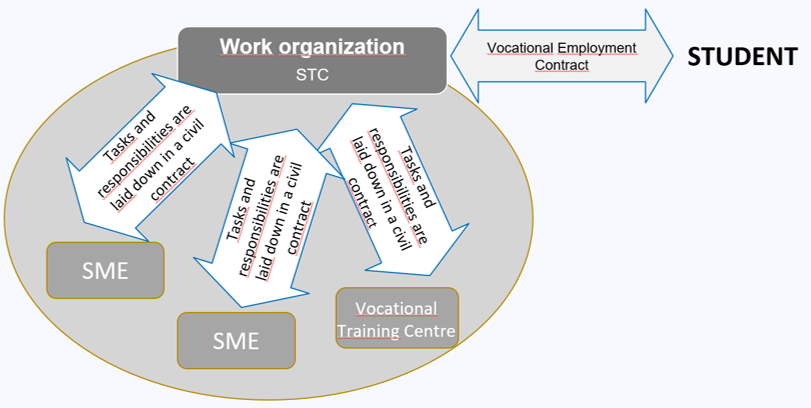The Strategy VET 4.0 defined the establishment of sectoral training centres (STCs) as one of the necessary interventions to improve dual training.
The majority of SMEs are faced with a lack of qualified workforce, experiencing difficulty filling vacancies. At the same time, they are usually not prepared to provide their future employees with the needed professional knowledge through training. They either do not have adequate infrastructure for training or cannot afford to assign competent professionals to training for long periods of time, as production might suffer. Last but not least, the administrative burden involved with training is hard to handle.
The legal background for the establishment of STCs was provided by the VET Act (Act LXXX of 2019 on VET entered into force as of 1 January 2020). According to its provisions, an STC is a non-profit economic organisation that can be formed in three ways:
- at least four micro or small enterprises, or
- two or more medium-sized enterprises or bigger corporations or other business organisations that are not considered to be a small or medium-sized enterprise, or
- one or more business organisation and a VET centre.
Professional associations and organisations can also have an ownership in an STC with a maximum of 10%, so that even more micro and small enterprises can be involved.
There are two different approaches to the organisation and role of STCs:
- the STC can act as a training organiser – in this case, the STC creates a virtual training space, while the training itself is delivered using the infrastructure of the member organisations. The work of the STC includes coordinative and administrative tasks. This model is illustrated in Figure 1.
Figure 1

2. the STC itself can provide practical training – in this case, the STC has a training workshop, and the training is delivered using the infrastructure of the STC, along with that of the member organisations. This second model is illustrated in Figure 2.
Figure 2

In both cases, the training workload is shared among the members of the STC. The vocational employment contracts (called apprenticeship contracts) with the learners are concluded by the STC, which is the body that claims the tax credit related to dual training. The members are not burdened by any administration work and the wages are paid by the STC.
Besides dual training, the STCs also plays a role in the further training of VET teachers.
The first STCs have already been established with the participation of both SMEs and bigger corporations. A good example of an operating STCs is the training centre in Zalaegerszeg (Zalaegerszegi Duális Ágazati Képzőközpont Nonprofit Kft.), which has a priority cooperation with the test track development programme in Zalaegerszeg.
Further STC establishments are planned. In a priority programme, altogether 29 VET centres applied for creating STCs with the participation of their partners to improve their infrastructure and professional development further.
Read more:
- Urizmus-vendéglátás ágazati képzőközpontot hoznak létre Egerben [Tourism and catering sector training centre to be set up in Eger]
- Felveszik a kesztyűt a szakemberhiány ellen: építőipari képzőközpont nyílt Keszthelyen [Accepting the challenge of skills shortages: a construction training centre opened in Keszthely]
- Faipari ágazati képzőközpont alakul Karcagon és Mezőtúro [Wood sector training centre in Karcag and Mezőtúro]
| Please cite this news item as: ReferNet Hungary; Cedefop (2022). Hungary: sectoral training centres to strengthen involvement of small and medium-sized enterprises in dual training. National news on VET |

